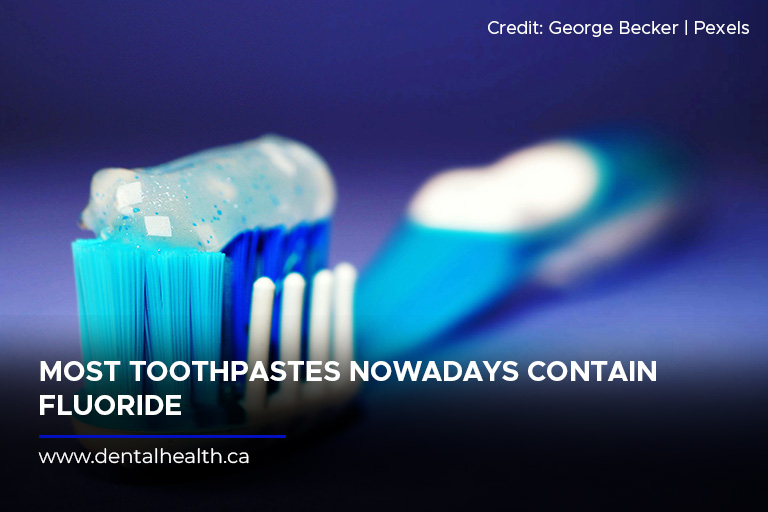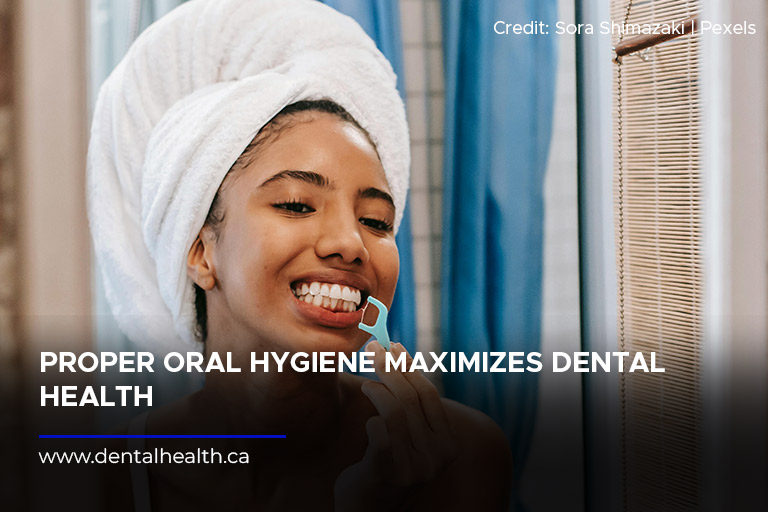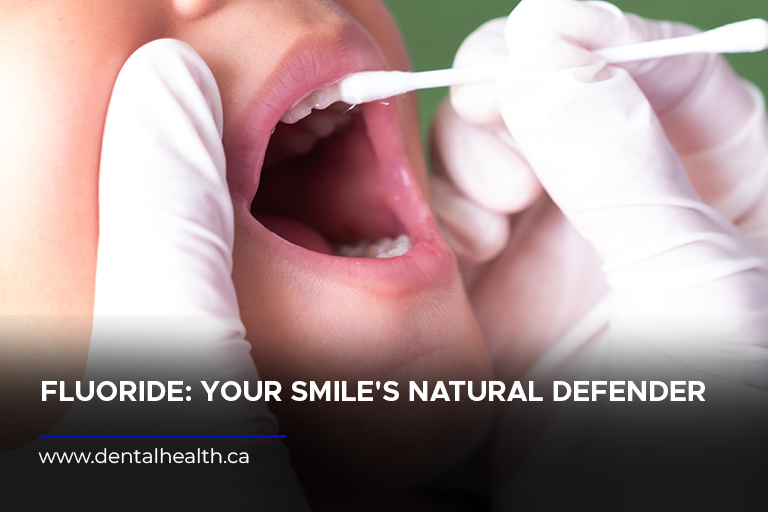Fluoride stands as a cornerstone in the maintenance of oral health, playing a critical role in the prevention of cavities and the reinforcement of enamel. Its significance in dentistry cannot be overstated, offering a protective barrier for teeth against the daily onslaught of acids and bacteria. Through a balanced and informative discussion, this article aims to shed light on the various aspects of fluoride, from its mechanism of action to its sources and the safety considerations surrounding its use. Fluoride’s multifaceted benefits underscore its value in a comprehensive oral hygiene regimen, underscoring the importance of its inclusion in daily dental care practices.
How Fluoride Works
Fluoride shields your teeth with its unique abilities:
- Strengthening Enamel: Enamel is the outermost, armour-like layer of your teeth. Fluoride integrates itself into the enamel structure, making it harder, more resilient, and less vulnerable to the repeated acid attacks that eventually cause cavities.
- The Remineralization Process: Your teeth undergo continuous cycles of demineralization (minerals dissolving out of the enamel) and remineralization (minerals being redeposited). Acid from the bacteria in plaque tips the scale in favour of demineralization. Fluoride not only makes enamel stronger, but it attracts calcium and phosphate ions, speeding up the remineralization process. Think of it like supplying high-speed reinforcements to defend against enamel breakdown.
- Slows Down Bacterial Activity: Fluoride doesn’t directly kill decay-causing bacteria, but it subtly interferes with their metabolic processes, slowing down their cavity-causing acid production. This gives your natural defenses a better chance to keep things in balance!
- Beneficial for All Ages: While most emphasis is on fluoride’s value for developing teeth, it benefits adults too! Strengthening enamel and aiding remineralization offers ongoing protection even after our teeth are fully formed. Fluoride can be particularly helpful for those prone to dry mouth due to medications, where the decreased saliva makes them more cavity prone.
- Makes Professional Treatments Even More Effective: Teeth regularly exposed to fluoride absorb more of the protective minerals from those high-strength gels and varnishes applied during dental cleanings and checkups. This results in long-lasting strengthening and a reduced risk of decay between appointments.
Sources of Fluoride

You can access fluoride’s protective benefits in several ways:
- Fluoridated Water: Many communities add a small, safe amount of fluoride to their public water systems, providing widespread protection for all users. Drinking this water consistently offers a steady source of fluoride, strengthening teeth both from the outside contact and systemically as it’s ingested. You can find out if your water supply is fluoridated by contacting your local water authority.
- Toothpaste: Nearly all toothpastes contain fluoride, the key ingredient in cavity prevention. Ensure your toothpaste is ADA-approved and look for the amount of fluoride listed on the label (measured in ppm). Always use the appropriate age-recommended versions for children, introducing fluoride toothpaste with the eruption of their first teeth. Adults can often benefit from toothpastes with higher fluoride content, especially if prone to decay.
- Professional Fluoride Treatments: Dentists and hygienists offer concentrated fluoride gels and varnishes, especially beneficial for those at high risk of cavities. These provide a mega-dose of remineralization benefits, offer protection beyond topical toothpaste use, and are a great proactive strategy. In some cases, depending on your needs, your dentist might recommend more frequent applications.
- Supplements: In areas without fluoridated water, some dentists prescribe fluoride drops or tablets for children as their teeth develop to ensure adequate intake. This is always done with close monitoring to ensure correct dosage and avoid side effects.
Fluoride Safety
- Proven Safe and Effective: Decades of research support the efficacy and safety of fluoride when used at recommended levels. The World Health Organization (WHO), Centers for Disease Control (CDC), and countless health organizations affirm its role in improving oral health across populations.
- Addressing Fluorosis: Excessive fluoride intake during childhood, when teeth are developing, can cause fluorosis — mostly cosmetic white marks or discoloration on the adult teeth. In most cases, fluorosis is mild and does not compromise oral health or pose dangers. However, severe fluorosis can potentially create pitting or brown staining on the enamel, though this is rare in areas with controlled water fluoridation.
- Consult Your Dentist: In areas with naturally high fluoride in the water, talk to your dentist about supplementation. Especially with young children, they’ll tailor recommendations, ensuring ideal intake. They’ll also monitor for any signs of overexposure.
Beyond Fluoride

While its benefits are significant, fluoride must be used strategically as part of an overall preventive plan:
- Brushing Twice a Day: Brush thoroughly for two minutes each time, morning and night, using a fluoride toothpaste. Use a soft-bristled brush and gentle circular motions, paying attention to all tooth surfaces. Don’t forget to brush your tongue to remove bacteria!
- Flossing Daily: Floss once a day to remove plaque and food debris from between your teeth where your toothbrush can’t reach. Be careful with your technique – avoid snapping the floss against your gums, which can cause irritation.
- Limiting Sugary Snacks and Drinks: Bacteria thrive on sugar, producing acids that erode your enamel. Minimize sugary indulgences and opt for healthy snacks like fruits, vegetables, and cheese. When you do consume sweets, try to do so along with a meal, rather than sipping or snacking constantly.
- Rinsing After Sugary Foods or Acidic Drinks: If you do indulge in sugary snacks or drinks like soda that are particularly damaging, rinsing with water afterward can help neutralize some of the effects. However, avoid brushing immediately after exposure to acid, as you can inadvertently scrub softened enamel, causing more damage. Waiting about 30 minutes is ideal before brushing.
- Regular Dental Visits: These are non-negotiable! Your dentist and hygienist will thoroughly clean your teeth, removing hardened tartar buildup that harbours bacteria and contributes to demineralization. Additionally, early decay detection allows for timely intervention, often easily treated with fluoride treatments before it progresses to a larger, more complex problem.
Fluoride’s role in dentistry is undeniably significant, offering a protective measure against tooth decay and enhancing oral health. Understanding its benefits, sources, and safety considerations allows individuals to make informed decisions about their oral health care. Remember, fluoride is most effective when part of a comprehensive oral hygiene regimen, including regular visits to your family dentist.
For those seeking professional family dentists in Beamsville, Kingsway Family Dentistry offers a range of services tailored to meet the needs of every family member. Contact us at (905) 563-4001 to learn more about how we can support your oral health journey.

